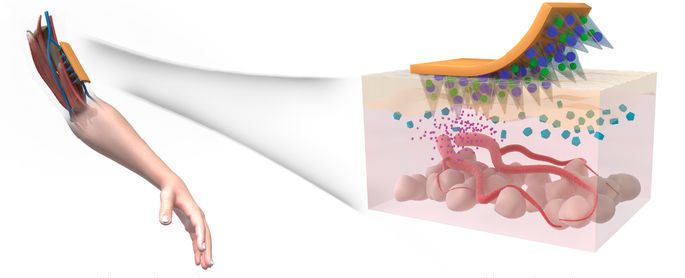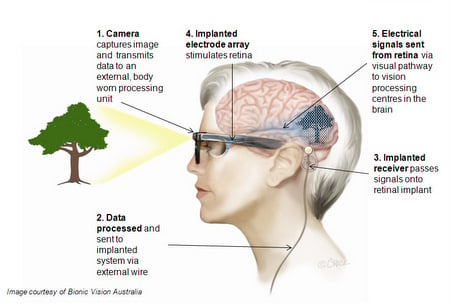Podcast: Play in new window | Download | Embed
Bar: Hello and welcome to the GolgiRadio I am here with Michael Nguyen. Hello, Michael!
Michael: Hello.
Bar: I met Michael in a pizza place, and this is a very improve podcast right now. we’re starting to talk about some stations, and Michael is aspiring to become a psychiatrist who’s working in Sutter Hospital. Putting electrodes into the brain could potentially be an option to widen the senses, we have now and connect another input channel sensors use a electrodes. Maybe we can trigger something else.
Michael: Yeah. , one of the interesting things about the brain is your brain is the way you see the world. Right? Everything that happens to us, it’s, through these little electrical impulses, coming in through your brain and you are interpreting it.
And so when you hear a sound, it vibrates in the ear. And so it ends up, conducting that into mechanical force, transferred into the electrical force and your brain interprets it, and that’s how you hear things. , now what’s kind of interesting i. Because we know everything comes down to electrical signals.
When you look at a person who has a mental illness like schizophrenia, they often hear things or see things that aren’t really there. They’ll hear voices, sometimes voices that they recognize or they don’t recognize, they’ll see things are kind of unusual. They’ll feel things in their bodies like, different skin sensations or maybe they’ll smell something.
People have seizures, right? They sometimes smell burnt rubber. , they smell, baking bread. They smell something maybe from their childhood. And it all comes down to this possible idea that, there’s these weird things in the brain that’s happening where they don’t recognize it as coming from themselves.
When a person has a seizure, electrical, discharged in the brain and your brain doesn’t know what to make it. So tries to put it into some sort of context and knows. if you have a seizure, for example, in the place of the brain that processes smells you may smell something as random seizure. , and I think in studies it’s Michelle like if you’re able to stimulate certain parts of the brain, they’ll start to have unusual stimuli.
Like they’ll also continue to build, might smell something or see something or hear something. You know, and it’s just kind of amazing about how that’s just how the brain works. Just trying to make sense of random electrical impulses.
Bar: As far as I know on the similar, know that the neuralink that Elon Musk as far as to create currently, there are some conditions where few electrodes inserted into the brain. Found to be useful in treating epilepsy (read more). do you think that there is a future that it will become a normal?
Michael: a normal thing for some sort of treatment like that?
Bar: Not exactly treatment, but. And normal thing to expand your senses and use it to send extra input.
Michael: Yeah. , you think about, people who use drugs, right? A psychoactive drugs in order to gain new experiences, like people who do drugs in order to gain like a spiritual type of, experience.
I could imagine the future where instead of taking a substance for a chemical-induced reaction, you get stimuli through some sort of electric apparatus. For example, there’s a treatment called electric convulsive therapy, right?
People use that. it’s usually treat something, but, there’s this new therapy called trans magnetic stimulation and some people experiment with that, and they start having these unusual feelings, I’m not exactly sure. , that’s kind of on the cutting edge.
Right now. People are doing a lot of research. , but I could imagine where that could be used someday as a way to kind of experiment with your, your senses.
Bar: That’s very interesting. Is there anything else you would like to share with us about that note of neuroscience and psychiatry.
Michael: we had just come from a meeting talking about this, about how traditionally there is the separation between neurology. You know, the very like hard science, the wiring of the body and psychiatry.
We talk about neurology being like the hardware and psychiatry and the software. And as we get further, further in the future, these things start to kind of, recombine. I guess, and I am super excited to see what kind of stuff we might come up with in the future. I would feeling that there might be a few cool new things coming up pretty soon.
Bar: Also, one more thing about the neuralink most people who would like to use this technology wouldn’t like to have those side effects of certain drugs. Is there a way to somehow surpass that?
Michael: I’m not exactly sure. , I imagine that if it was going to go through the head, the thing is, you have your bone, you have your whole skull, right?
And then there’s the skin on top. And so electrical impulses that come from the. surface gets very diffused out, so you can’t localize exactly where you want to hit. And you would need to have something in plants. I would think, which would be, interesting. And it seems so foreign to us now.
but already we are kind of becoming, you know, I could imagine the future where that stuff becomes kind of normal, where like for like cyborgs in a way. For example, I do know that people often use, these patches that you put on your arm. , it connected. In through your, it has sensors go right underneath the skin and it’s able to measure your blood sugar.

Chen lab, NIBIB.
it’s a real-time where you can eat something, for example, a pizza and then look on your phone and go, Oh, my blood sugar is kind of spiking right afterward. And that’s a normal thing. People are using that. People who have type one diabetes, that’s like
Bar: normal for them. What does the patch called?
Michael: I don’t remember the name of it. I mean, there’s several different types. , I can get back to you on that one.
Bar: There also, those goggles that are currently available. They cost approximately $100,000. that allows blind people to actually see, I think the range now is 80 peak souls, but from complete blindness to be able to detect if there is a car or a step.
That’s a huge.

Michael: And, that’s kind of a similar idea of what we’re talking about. So our eyes convert lights into electrical signals. it makes sense that you can have goggles that, take the world and convert it in, see electrical signals. And I think those probably straight into the brain at some point. And they also have hearing aid are similar to that as well.
Bar: they have those implants that has a microphone outside of just cold and for as minted into some kind of device to create the electrical signal lights. Supposed to produce complete different type of sounds, and it’s very hard to get teased to understand language in that way, but it works. Anyways. Thank you, Michael, for your time. That was a very spontaneous and interesting podcast
Michael: Well, thanks for having me on.
